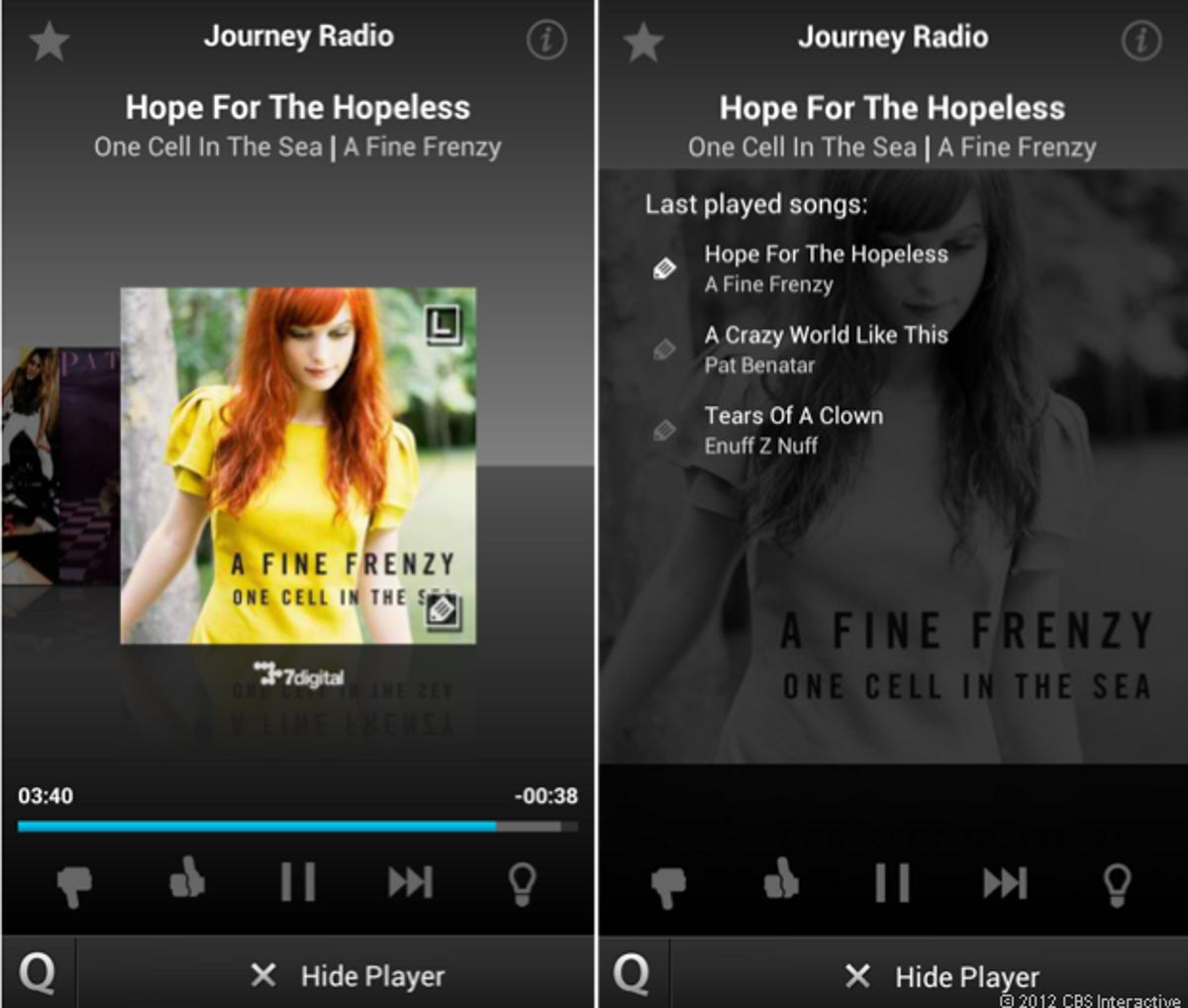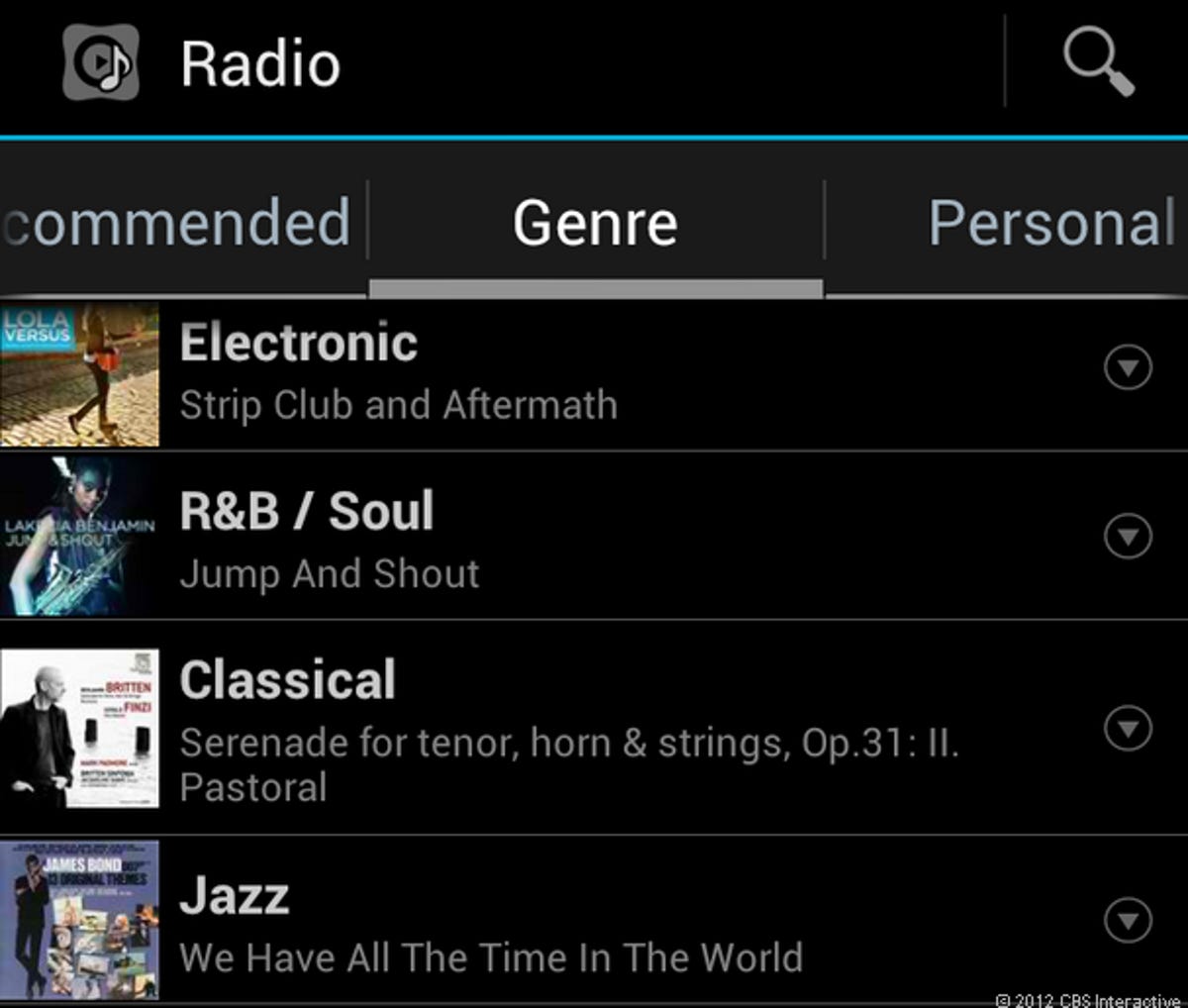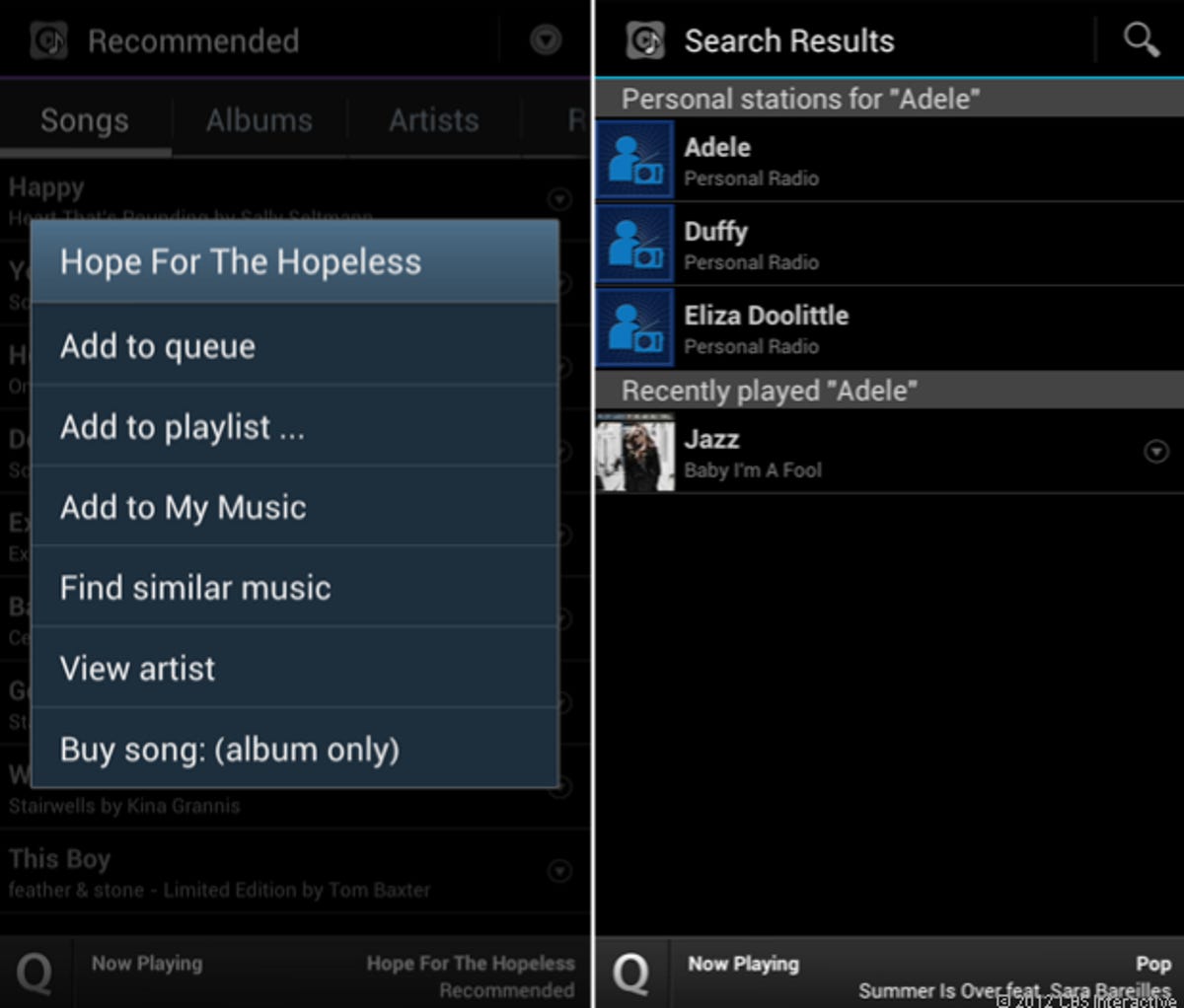Samsung’s Music Hub app launched on the Samsung Galaxy S3 in Europe back in May, but it’s taken until now for the subscription music service to hit our shores. CNET got an eyeful (and an earful) of the Music Hub app on several GS3 devices ahead of launch. Since the software was preproduction, there may be some slight differences between what we saw and the final product.
What it is
The most important thing to know is that even if it comes preloaded on your phone, the Music Hub isn’t free. Fueled by Samsung-owned mSpot, the mobile app costs $9.99 per month to use.
There technically is a free version, but it only lets you purchase songs through a storefront. That storefront, by the way, is managed and fed by 7digital and its 19 million licensed tracks. mSpot long ago partnered with 7digital to run the backend for mSpot’s own front-end service.
Related stories
There are three major parts of the Music Hub — an interface to play music you already own, a catalog of popular songs that you can stream or buy, and a radio app that’ll play you curated stations by genre, or through Pandoralike “personal” stations based around an artist.
There’s also a recommendation engine built in, playlist functionality, and offline listening for your own music, or for any songs you buy from the catalog. You’ll need a Samsung account to sign in, and you should know that the service is self-contained; it doesn’t integrate with Google Music, but it will detect songs you’ve stored on the phone or on the microSD card.
You can also download a desktop app for your Windows PC or Mac that will help transfer songs from the likes of iTunes into your music locker.
If the catalog run by 7digital has rights to the same songs you own, Samsung’s Music Hub will play the 7digital version, an AAC file versus an MP3 file. Songs play at a standard quality of 64kbps AAC+; a high-quality setting yields a rate of 160kbps in the AAC format. Any songs you buy play back MP3s at 320kbps.


Jessica Dolcourt/CNET
Extra stuff
In addition to its three main features, the Samsung Music Hub has a few extra goodies strewn about its interface. One is a lyrics feature, denoted by a letter “L” icon, which will fetch and display lyrics to a song (if it’s available in its database) once you add it to My Music.
If you find yourself liking a particular tune that’s playing on the radio or in your music list, a “tag” icon marks that song for later listening and quick access. All these songs are saved onto a “tagged” list that you can access on the start screen.
Let’s say you’d rather favorite an entire radio station instead of a single song. Tapping on a star icon while the station is playing adds it to a “favorites” list and keeps you from having to scroll through the 16 included radio station genres to get to the one you want.
There’s also a suggestion tool, designated with a simple light bulb icon, which aggregates similar songs to the one you’re currently listening to on the radio. And to better your listening experience, you can turn on the sound equalizer or adjust your audio quality based on your data connection.
Last, there is the obligatory social media integration, which lets you show off to your buddies which songs are currently playing in your music queue. By clicking the share button, you can post to your Facebook wall, type out a Tweet, or e-mail a friend to check out the artist at Music Hub’s Web site.


Screenshot by Jessica Dolcourt/CNET
What works
Here’s what Samsung’s Music Hub does right.
Start screen: We like the clean, smart-start screen layout with its 12 navigation boxes. We used the My Music, Catalog, and Radio boxes the majority of the time, but it’s easy to see how to get to Settings and downloads when we need it.
iTunes integration: After installing the mSpot desktop app and signing in with a Samsung account, uploading iTunes content was seamless and fast. Tunes appear in the My Music bucket.
Creating playlist: Making an on-the-fly playlist from the catalog is really easy. (Finding that playlist is another matter; you have to know that it lives in the My Music silo.)
Sorting tracks: The Recently Played bucket neatly sorts tracks you heard by song title, album, artist, and radio.
Replay songs: If you want to listen to a song you just heard, it’s easy to replay it in the catalog view by dragging the current album art image out of the way until you get to the song you want.
Tips: The straightforward Help screens mostly explain what’s what.


Jessica Dolcourt/CNET
What doesn’t work
These areas could use a little work, or a lot.
The UI: The simple start screen aside, the Music Hub’s overall interface isn’t as intuitive as it first appears. When you switch from the radio to your music, the station’s genre name still appears above what’s currently playing; the difference between a playlist and the queue/Q isn’t immediately obvious; and launching playlists is confusing
When browsing through different radio stations, Music Hub tries to do you a favor by flashing the name of the song that’s playing, but frustratingly omits the name of the artist who sings it. So unless you already know the name of the song, that “useful” bit of information isn’t very useful at all.
Limited database: A music subscription service is only as good as its database. We understand how hard it is to get comprehensive licensing agreements, but for $9.99 a month, we couldn’t form radio stations around heavy hitters like Florence + The Machine and Nicki Minaj. Typing in Beyonce generated offshoot results like soundtracks, a Christmas album, and other artists’ mixes.
Not everything’s available: In addition to missing artists, a relative few songs offered lyrics, even when the icon appeared. We wish mSpot would take a cue from SoundHoud, whose app scrolls available lyrics in real-time as words are sung. Furthermore, when we “tagged” songs to listen to later from the radio, many of them were marked with an “NA,” meaning that they couldn’t be played or weren’t available for playback. We noticed this for several genres, like Alternative, Blues, Latino, and World.


Screenshot by Jessica Dolcourt/CNET
Personal stations: Music Hub takes a stab at personalized radio like Pandora, Slacker, and others, its recommendations engine overwhelmingly failed to produce songs we actually liked, or expected to hear, over many hours of listening on numerous stations (one exception for Jessica was the Fine Frenzy station, which played a mix she liked.) We realize this is highly subjective and harder to pin down, but there it is. We also found it odd that most personal stations rarely played music by the artist in question. One exception was The Beatles station, which did drum up some Paul McCartney songs.
Too much lag time: Even while using a zippy device like a Samsung Galaxy S3 and running on a strong data connection over 4G and Wi-Fi, the service took a few seconds more than what we’d prefer to load songs, bring up playlists, and generate suggestions.
No author bios: One of the best parts of discovering new music is learning about the creative force behind the art. Click the information button as a song plays and you’ll see a list of recently played songs, but no details about the artists themselves.
Who should use it
With Music Hub, Samsung envisions one music app that works across multiple screens: TV, tablet, smartphone, and so on. Though we dig the idea of a comprehensive music service wholly integrated with all these Samsung devices, there’s a lot about Music Hub that still needs polishing. True, we’ve only handled a prereleased version, but even if we get past the minute details, there are higher-level considerations working against it.
People who are already deeply invested in Google Music, for example, would be hard-pressed to migrate over to the Hub, since it requires set-up, a subscription, and new billing details. For now, people who are most interested in streaming radio or cached stations should stick to optionally free apps like Slacker Radio and Pandora, and occasional lyrics-hunters can use SoundHound or Slacker.
The $10 monthly subscription fee is just right for a music service. If you own more than a few Samsung devices and you’ve yet to dip your feet into the world of online music subscriptions, you could check it out on a month-by-month basis, though without a free trial and more established competing apps you can try for free, we can find little incentive to buy before you try.
The Samsung Music Hub will be available first on the Samsung Galaxy S3, and will expand to other handsets.



